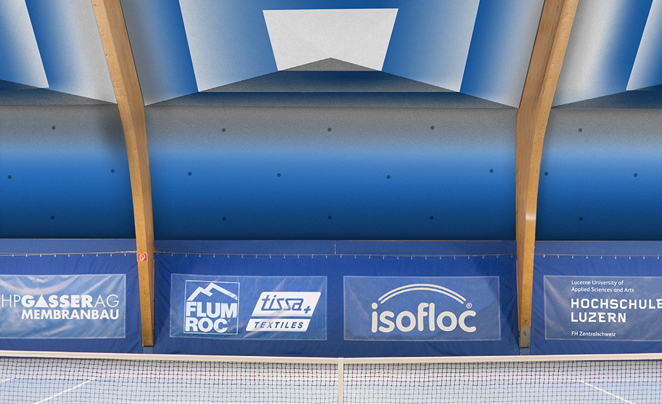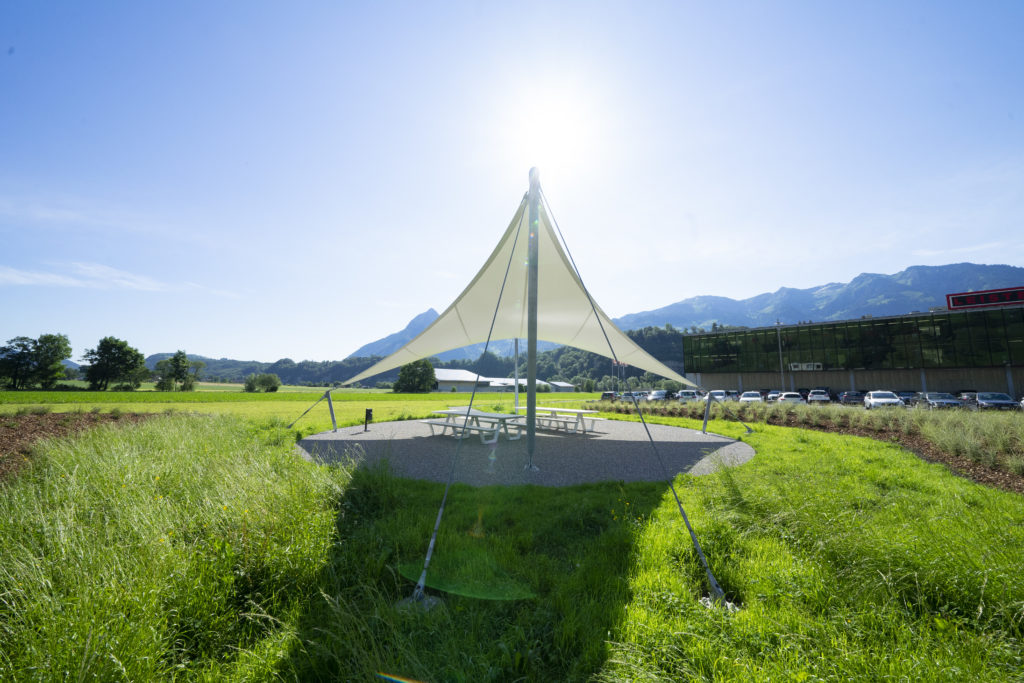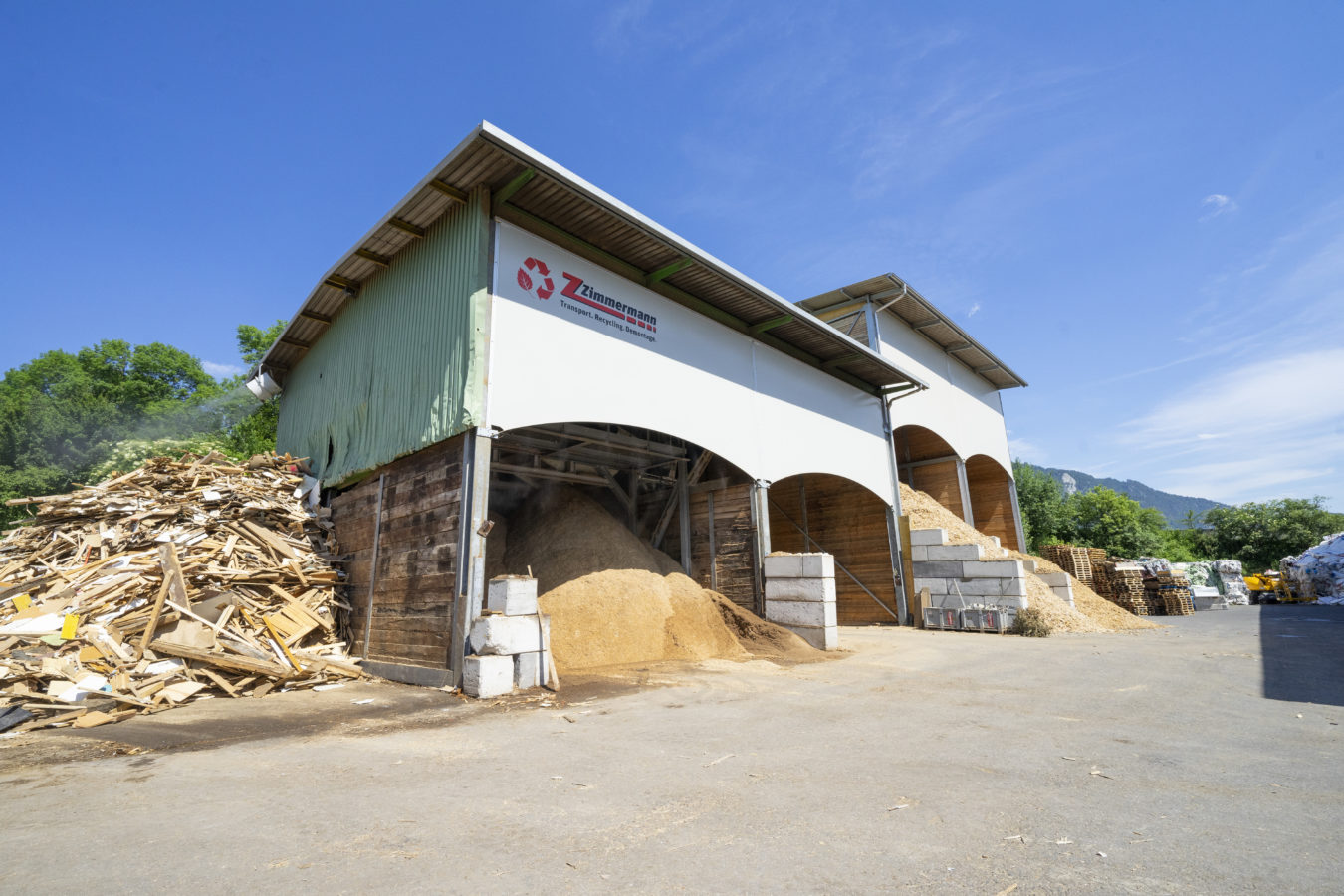A brief portrait of the Swiss Building Envelope Association
Building Envelope Switzerland is the professional association of Swiss building envelope companies. More than 600 member companies are the basis for the association to act as a competence center for building envelopes and to advise and accompany its members accordingly professionally. Different commissions form the working staff of the association and regularly visit partner members to discuss the state of development and the implementation of technical and building regulations and to initiate new developments. In addition to providing technical support, the Swiss Building Envelope Association also looks after the employees in the companies and promotes the interests of the employees and the companies in equal measure.
Swiss Building Envelope Association visits HP Gasser AG
On June 26, 2019, the Technical Commission Flat Roof of Building Envelope Switzerland visited HP Gasser AG. The focus was specifically on the topic of flat roofs. During the tour of the company and in conversation with the management and employees, the members of the commission were able to get an impression of how work is done at HP Gasser in the area of flat roofs and especially around the flat roof window elements.
It quickly became clear that the employees of HP Gasser AG are at the highest level of technology and craftsmanship and actively influence what is happening in the market with their innovative services.
Synergies for the benefit of customers
During the visit of the Technical Commission Flat Roof at HP Gasser it became clear that especially the customers of the building envelope companies are the beneficiaries of the cooperation between Building Envelope Switzerland and its partners. Real win-win situations arise in the cooperation, from which especially the clients benefit, for example in flat roof renovation. In the exchange between the Swiss Building Envelope Association and the partner members, experiences are exchanged and the latest findings and practical examples are discussed. This creates synergies that benefit customers in particular. There is a transfer of knowledge, skills and experience at the highest level, which brings countable benefits for both sides. And last but not least, for the customers, who can benefit from the best experiences of the cooperation between Gebäudehülle Schweiz and HP Gasser.
As a conclusion of the meeting of the Technical Commission Flat Roof with HP Gasser AG in Lungern, it can be stated that the cooperation between the association and partner members works very well. The biggest winners are always the customers, who can rely on precise, technically serious and always fair work by HP Gasser AG.
Perhaps you are already a customer of HP Gasser AG or have corresponding projects in prospect. Then we look forward to a continued pleasant exchange and a good cooperation.
Textile insulation. This is the name of the new technology that the Lunger-based company HP Gasser intends to use to renovate many sports and industrial halls over the next few years. It is the result of a project with the Lucerne University of Applied Sciences and Arts.

Published by Luzerner Zeitung: www.luzernerzeitung.ch/ld.1134436
Zéline Odermatt
There are thousands of sports and industrial halls in Switzerland. Many of them are old, poorly insulated and should therefore be renovated, writes the Lucerne University of Applied Sciences and Arts (HSLU) in a statement. To simplify this process, the university, in collaboration with the Lungerer company HP Gasser AG, has developed a technology “that could revolutionize the renovation process” – a so-called textile-based dusk.
“The collaboration with HSLU has been going on for years,” explains project manager Simon Halter of HP Gasser AG. He is responsible for the practical handling and the cooperation with the HSLU students at the site in Lungern. The prototypes were manufactured there. “We have the necessary expertise for planning, processing, execution and assembly. That’s why everything came together at our site.”

The goal is to make it easier to upgrade a hall in need of renovation. As the university writes, these are thousands of halls that no longer meet today’s energy requirements and for which renovation is being sought as part of the federal government’s Energy Strategy 2050. “If you calculate with ten percent that can be equipped with the textile insulation and are allowed to do so due to static requirements, there are enough halls left,” Halter says. In addition, there are 2000 old commercial halls that could be converted into office or exhibition buildings with the textile insulation.
Thermal insulation consists of waste materials
But what is this process all about? The revolutionary thing about textile insulation is the unusual combination of materials, says the HSLU. Simon Halter explains that the process can be used as a “cushion” variant or a “canopy” variant, depending on the type of building. In the latter, the fabric is applied only on the inside and the insulation works by means of panels.
With the “cushion” two fabrics are stretched and at the end the insulation is blown in. “The use of fiberglass fabric also ensures fire protection.” The blown-in thermal insulation between the fabrics is made of waste materials. Depending on the variant, the granules are rock wool, cellulose from waste paper or rock wool insulation boards. Halter: “Thus, the method also makes ecological sense.”
Another plus point, he says, is saving time and therefore money. The renovation work will only take a few weeks instead of months, as was previously the case. “The textile insulation is individually planned and pre-produced at our factory, so we can refurbish the hall within a short time. The customer’s biggest need will be that we won’t stop operations in the hall,” Halter says.
The project manager of HP Gasser AG does not see a completely new creation in this process, but it is possible to achieve clear advantages in terms of construction. “Because the textile insulation remains visible inside a hall, we can also score points visually.” That’s because the fiberglass fabric can be printed with color gradients and patterns.
Company hopes to receive orders for the winter
The HSLU project is now complete, with textile insulation available in fall 2019. “Various inquiries have already been received about this process. We already have a concrete inquiry for a hall, although we only wanted to get started with this work towards fall and winter,” says Simon Halter. For the company from Obwalden, the usually quieter period in the cold months was also one of the reasons why it took part in the project. Halter is confident: “We’ll see what else is in store for us.”
Anyone who regularly travels on the A8 between Sarnen and Alpnach may already have seen it: the new sun sail in front of the Leister headquarters in Sarnen. The 10 x 10 meter membrane serves as an outdoor break area for employees all year round. The round shape is visually appealing, the weather protection without major maintenance is conceptually convincing. For this reason, HP Gasser AG has since been allowed to install a second sun sail at the Leister headquarters in Galileo-Strasse in Kägiswil.
During the production of wood chips, the dust released can become a nuisance for residents and the surrounding area. To prevent this from happening at Zimmermann Umweltlogistik AG in Alpnach Dorf, the wood shredding plant was recently fitted with a custom-made dust shield. Within two days, HP Gasser AG attached the membrane panels, which measure up to 9 x 6 meters, to the existing steel structure. This cost-effective solution does not require a substructure of its own and can also be used as an advertising surface for the outside – a clean solution all round.
 Deutsch
Deutsch  English
English  Français
Français 






